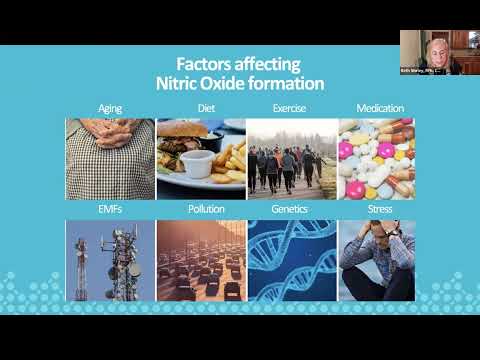ITP chart https://miro.medium.com/max/1400/1*5jDjHTVs2Cc_QPymWypguQ.jpeg shows that it’s very mildly negative (not statistically significant) but some people clearly think it has some anti-aging properties
Seems pretty minimal, only in females:’
Methylene blue (Harrison, 2014) led to a significant (p = 0.004) increase in maximum lifespan that was limited to females and was not accompanied by alteration in median.
https://onlinelibrary.wiley.com/doi/full/10.1111/acel.12953
More details here:
Just came across this… a little old (2018) , but still covers a lot:
Methylene-Blue-Cognitive-Vitality-For-Researchers.pdf (327.2 KB)
I’ve used it as a nootropic in a product called Blue Cannatine. It’s great for energizing the brain for interviews and public appearances, except that it turns your tongue and teeth temporarily blue.
I have been taking about 65mg daily for a few years now, marvelous stuff. The Peter Attia Drive: #38 - Francisco Gonzalez-Lima, Ph.D.: Advancing Alzheimer’s disease treatment and prevention – is AD actually a vascular and metabolic disease?
What benefits do you see?
Unless there is much better human data in males, I would avoid MAOIs since I have tyramine intake from fermented foods, take psilocybin, and I already have some brief orthostatic intolerance. But the main thing is it interacts with my diet.
Is this list accurate, it’s been floating around this page, not sure where it comes from or who created it?
Yes, its accurate. I think it comes directly from the ITP, its a summary of ITP data The Most Promising Longevity Drugs To Date (by Apollo Health Ventures)
“can donate/accept electrons”/“stimulates mitochondrial respiration”
Ok, energy orbital differences relative to those seen in carotenoids and and anthocyanins and melatonin and C60? Isn’t C60 also good at doing this?
Can it make up for Complex I inhibition from metformin?
“unique auto-oxidizng property of methylene blue”
It can be used for cyanide poisoning… Maybe this counteracts Complex I inhibition from metformin
Methods
The redox agent methylene blue and the cell-permeable succinate prodrug NV118 were evaluated by measuring mitochondrial respiration and lactate production of human platelets exposed to metformin and co-treated with either of the two pharmacological bypass agents.
Results
The cell-permeable succinate prodrug NV118 increased mitochondrial respiration which was linked to phosphorylation by the ATP-synthase and alleviated the increase in lactate production induced by toxic doses of metformin. The redox agent methylene blue, in contrast, failed to mitigate the metformin-induced changes in mitochondrial respiration and lactate generation.
====
According to most studies, MB has a pro-oxidant effect at lower doses around 0.5 to 4mg/kg which aids in the production of singlet oxygen and peroxide radicals. It can especially be beneficial to use infrared light or get sunlight immediately after an infusion. At high doses (>10mg/kg), MB can have severe toxic effects such as high blood pressure, methemoglobinemia dizziness, GI distress, and induce hemolytic anemia in people with a genetic disorder called G6PD deficiency. Because it is known to be in fish tank cleaner, please do not drink it! MB is used to treat fish fungal infections and this version contains lots of heavy metals such as arsenic, aluminum, cadmium, lead, and more. Industrial grade used in labs or textiles has up to 11% impurities as well.
If you want to take it orally, here is the link to the CZTL Methylene Blue that we recommend because of their robust testing program. It is shipped in 1-gram containers of powder with dosage with mixing instructions and a Certificate of Analysis (CofA) verifying the purity. Most people do well taking around 10 to 60 mg a day. The half-life is about 5 hours which means you can take it twice a day. MB is water-soluble which means you don’t have to take it with food
If you are interested in methylene blue, its history, and its uses, this is a very interesting video.
In 1886 the phrase “magic bullet” was used to describe methylene blue.
“Slows telomere shortening”, “Inhibits tau protein formation in the brain”. etc.
Do your own research.
Methylene blue is remarkable. If you want to go down the rabbit hole into its many benefits use the search term “Methylene blue as an anti-aging drug” in Google Scholar.
Methylene blue is also being used to eradicate persistent Lyme disease; B.b spirochetes are found in brain tissue of deceased patients with documented AD: A Novel Approach to the Treatment and Prevention of Alzheimer's Disease Based on the Pathology and Microbiology - PubMed ![]()
I have been reading up on MB which to me appears to be something that can improve the function of badly functioning mitochondria temporarily (it has a 4 hour half life). That I think could be useful as part of a broader strategy which includes improving the mitochondria.
As part of that I found this paper which is I think quite good and worth a read.
I am currently taking methylene blue as a self-experiment.
The results so far:
No methylene blue: Pee light yellow.
With methylene blue: Pee looks mostly blue
With methylene blue and vitamin B complex supplement: Pee is very green.
TMI?
What dose are you taking?
10mg from 20 drops of 1% solution according to directions from the supplier.
Do you identify any merit beyond urine colour.
No, but I haven’t had any viral infections since I have been taking it, nor have I developed Alzheimer’s. ![]()



